
Art by Steve Ditko
Note: This article predates the relaunched films with the traditional web-shooters.
You know that Peter Parker really is just a regular guy with everyday problems like the rest of us. Here we see that he's a dandruff sufferer who, always strapped for cash, has agreed to do some product endorsement. The left-side is tingling!
That is of course a joke. For the most part when I describe Spider-Man as "the Mugwump Spider-Man" as I did, for example, in Doctoring Art Gotic Part IV , it is meant as a joke as well. Cause I think it's funny. But the more I think about it the more inherent truth I see in the comparison.

Art by (I believe) John Romita
If you've never had this concept of Spider-Man before, I apologize, but you gotta admit, he's ejaculatory. He's super ejaculatory. Spider-Man's ejaculations are multi-functional and nigh-unbeatable. It's one of his two truly great powers, a great story-telling device, a kind of street-level Green Lantern's Ring, all the more entertaining from its inherent limitations. The switch to organic webbing for the movie only makes this connotation more easy to recognize. It is inherent in any version of the character.
But the Mugwump thing is deeper then that with Spider-Man, and it's other level involves Spider-Man's other truly great power. But I'll get back to that.
The Mugwumps in question are not the Republican supporters of the Democrat Grover Cleveland, the British pacifists, or the 19th century VD medicine. It is surely the inspiration for the early '60s band name, The Mugwumps, members of which went on to perform in the Mamas and the Papas and the Lovin' Spoonful. And I just can't imagine J.K.Rowling didn't know what she was doing when she titled Albus Dumbledore the "Supreme Mugwump of the International Confederation of Wizards". Indeed.
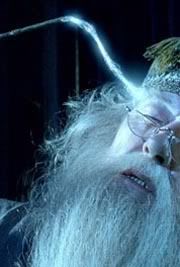
Dumbledore loads his Pensieve
But I'm talking about the Mugwumps from William S. Burroughs' novel "Naked Lunch", and more specifically the creatures as they were presented in the 1991 film adaptation.

Burroughs meets his creation on the set of "Naked Lunch"
I read "Naked Lunch" probably fifteen years ago. I've seen the film many times. Mugwumps are a sentient species that excrete semen that acts as a super-hallucinatory drug in the non-reality of Interzone. Have you seen "Naked Lunch", because if you haven't you should. I'm not saying you're going to enjoy it, but you should see it.
You may now be asking if I think that Stan Lee made a superhero out of a Mugwump on purpose. Well, it isn't impossible, but it's pretty unlikely. "Naked Lunch" was first published in Paris in 1959. A separate version, based on a 1958 manuscript in the possession of Allen Ginsberg, was published in the United States in 1962, the same year that Spider-Man debuted.
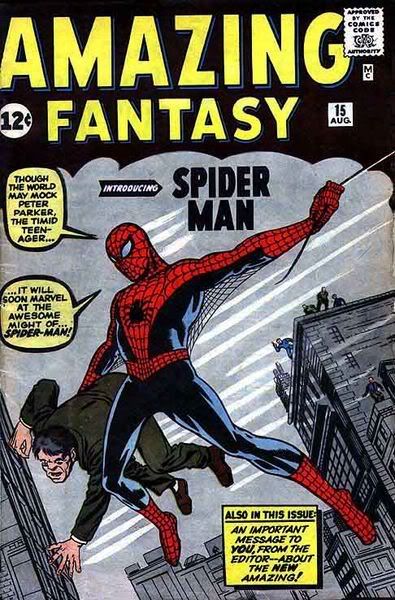
Art by Jack Kirby and Steve Ditko
Spider-Man first appeared in "Amazing Fantasy" #15, August 1962. The last issue of the series that once featured the adventures of Doctor Droom. In March of 1963 the title was relaunched as "The Amazing Spider-Man". Jack Kirby drew the famous cover above, inked by Ditko. Kirby actually played a significant if controversial role in the creation of Spider-Man. Stan Lee has stated the character was inspired by the pulp character The Spider. Ditko invokes animal based super-heroes, specifically DC's (blatantly Horus resonating) Hawkman, and further connects the concept of a spider based character to already established insect based Marvel super hero Ant-Man.
As the story goes Lee wanted to create a super hero who was a teenager, but a super hero in his own right, not just a sidekick like Robin or Aqualad. And he wanted this teenager to be more real, in the happening Marvel style, with troubles just like the real kids, on top of his super adventures. He received approval for a character called Spiderman and went to Jack Kirby with it.
Jack Kirby, with his partner Joe Simon, had already created a spider based character, of course, back in the fifties, beating Lee and even Burroughs by at least a couple of years. Kirby has stated that he and Simon pitched the Silver Spider character for Crestwood publications "Black Magic" title. How great is that? The literal Occult-Kirby Spider-Man connection. Note the use of Silver for the character's name.
But it is an occult matter in another way as Joe Simon tells a different story, and one that Kirby affirmed as true shortly before his death. In Simon's own words:
"There's an interesting story behind Spiderman. I don't want to go into it fully here, but I can tell you that back in 1953 I created a superhero, a young man with spider-like qualities. I put the character in a presentation for a publisher and entitled it Spiderman. I designed the Spiderman logo. I had Clarence Beck do the penciled sketches. He was the predominant artist for Captain Marvel, the man who gave Captain Marvel its special comic style, and I believe he came out of semi-retirement to work with me on this. At the last minute, I changed the name from Spiderman to the Silver Spider. I thought at the time there were just too many 'man' titles around,-Superman, Batman, that stuff. I took the presentation up to Harvey Comics where it languished. I kind of forgot about it after a while. I was onto new projects. I wasn't looking back; there was no time to look back. You went on; you created. In the late 1950s, Archie Comics asked me to create a new line of superheroes. I gave the Silver Spider sketches to Jack Kirby and I changed the name again, this time to The Fly. Jack held onto the sketches and when Stan Lee asked Jack for new ideas, Jack brought the original Spiderman pages to Marvel Comics. Jack was busy with other work so Stan handed the pages over to Steve Ditko. Ditko, on first seeing those pages, commented, "This is Joe Simon's Fly." Steve Ditko worked up his own version of the character's costume. The comic that was published was called Spider-man. Marvel had stuck a hyphen in between the Spider and the man, for trademark reasons I suppose. Jack told me this years later. A few years before he passed on, he sent me back my original Spiderman logo."
This is all pretty great. It's from an interview with Simon presented at simoncomics.com, which you should check out for a link to a Joe Simon sketch of the original Silver Spider. It's very interesting too that the great C. C. Beck(who looked a bit Dumbledorish) played a role, and that the Kirby/Simon character The Fly is the crossbreed/midpoint between the Fawcett Captain Marvel and Spider-Man. And then there's that other David Cronenberg film.
So Kirby revived the Silver Spider as Spider-Man, keeping the magic ring motif, and apparently the transformation into an adult super hero. He was armed with a "web-gun". It wasn't quite what Lee was looking for and he passed the project onto Ditko. Ditko designed the costume, maybe the most brilliant in the genre's history. Ditko also did away with the gun and mounted the web-shooters on Spider-Man's wrists. Ditko certainly came up with the distinctive hand gesture Spider-Man utilizes to emit his webs, which he shares with Lee/Ditko's Doctor Strange. There's another interesting contention on this point. At the time he designed Spider-Man, Ditko was sharing a Manhattan studio with fetish artist Eric Stanton. Stanton has claimed no true credit in the creation of Spider-Man save for the possibility that it was he who thought the webs should come from his hands. A fascinating detail for the heroic Mugwump.
Looking back at the Cronenberg version of "Naked Lunch", there are a number of interesting common elements that almost want to make one think of Spider-Man in a far more existential manner. First of all, both the film and the famous origin of Spider-Man are initiatory stories. Note that Peter Parker is not only an orphan, but also a widow's son as his adopted father Uncle Ben dies due to Peter's irresponsibility leaving him with just Aunt May. For all we know Aunt May is a literal virgin mother to Spider-Man. The orphan motif is also in Kirby's The Fly. Peter's initiation involves learning his higher calling from his martyred Uncle, "With great power comes great responsibility". This is Spider-Man's essential statement. Great power does not just confer responsibility for that power, the power and the responsibility are one and the same. Having great responsibility then likewise means that one has great power. What is Spider-Man's great power? Greater then his webs? It is his Spider-Sense of course. Intuition is Spider-Man's great power. Intuition is Spider-Man's great responsibility. When he ignored his intuition it resulted in the death of his adopted father. Like Batman, this was a hard, swift initiation and it led to Spider-Man becoming the greatest hero of the Marvel Universe, and a mass initiator for other super heroes for that matter. This is a trait Spider-Man largely adopted from his friend/rival the Human Torch who frequently played a similar role in the early Silver Age.
The initiation process in "Naked Lunch" is of course much different and much darker. There is the fatal William Tell act of course, but I'm thinking about the three levels of narcotics William Lee, played by Peter Weller, engages in, increasingly bizarre, unreal, monstrous and powerful. The first stage of his trip to the unreality of Interzone comes from ingesting the Bug Powder he uses as an exterminator. This leads to lucid hallucinations that cause Lee to believe he is a secret agent working for a company that is fighting an organization called Interzone Incorporated. Lee travels to Interzone, a mixture of Tangiers and Wonderland, and writes reports on Interzone Incorporated's activities. These notes go on to become the novel "Naked Lunch". Lee writes his reports into a living, insectile typewriter named Clark Nova. I really enjoy the Kafka/bug powder level's easy synchronization to Spider-Man and his radioactive spider-bite.

The original blogger?
Lee (is that cool or what?) is a very strange kind of reporter writing essays on the events of his paranoid delusions. Peter Parker is a freelance newspaper photographer who specializes in taking pictures of himself as Spider-Man, photos that are used to defame him.
While in Interzone Lee moves off the toxic bug powder to the transcendental Mugwump Jism. This then coincides with the second level of Peter Parker's initiation into a super hero. Like an alchemical master Peter (perhaps intuitively) develops his wondrous web-fluid. This is something the filmmakers didn't get or chose to ignore. Spider-Man is not just a victim of science like the Hulk, or nature like the mutant X-Men. He enters stage two by being a super scientist, enhancing his abilities gained in stage one. Now, this is pretty clear in the Spider-Man origin and could be accepted I believe as planned. Stage three Spider-Man occurs much later and more synchronistically.
The top level of hallucinatory narcotic that William Lee encounters in Interzone, the cream of the crop, is the dried meat of a species of rare, giant, black centipedes. And quite nicely the Wonderland-drug plot of Interzone Incorporated involves the gender-hiding super villain Doctor Benway.
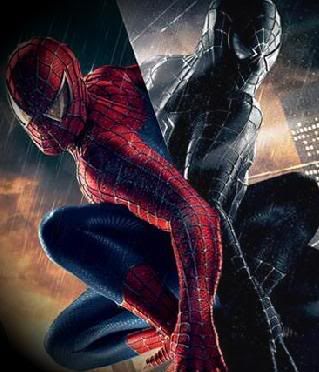
"Spider-Man 3" featured a highly altered version of the black, alien symbiote-costume storyline from the Spider-Man titles started in 1984. Of course there was no way they could have literally adapted the symbiote saga.
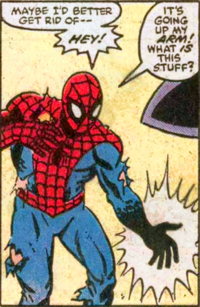
Art by Mike Zeck
In the comics, Spider-Man came across the alien costume while engaged in the "Secret Wars". "Secret Wars" involved a god-like being called the Beyonder, a god greater then Galactus and distinct from Eternity, who created a "Battleworld" and summoned numerous Marvel Super Heroes and Villains to fight a war for him to study. The prize offered the winners were their ultimate desires. The Beyonder was later revealed to be a Cosmic Cube by Steve Englehart in the "Fantastic Four". On the Battleworld, Spidey was out of web-fluid and his costume was badly damaged. He found the symbiote which handled both concerns as it generated its own, even better webs, now inexhaustible. The costume further enhanced all of Spider-Man's powers. However, at this important stage Spider-Man's intuition failed him as the symbiote was eventually revealed to be a sentient, parasitic entity. Perhaps this is why Spider-Man has never been the same since. The symbiote went on to become the monster-movie, fluidy Venom and other boring extrapolations.
Interesting though that Venom/Eddie Brock was played by Topher Grace, Eric Foreman from "That '70s Show", a sitcom that incorporated regular drug use in "the circle". Eric's father Red was played by Kurtwood Smith. Smith participated in the very violent initiation of Robocop in the 1987 film. Robocop was played by Peter Weller.
Spider-Sense is of course a psychic premonition of imminent danger, a higher state of consciousness by anyone's definition. One of the things they got wrong in the Spider-Man movies was the Spider-Sense. I found this to be especially so in number 3 where Spider-Man is constantly getting hit from behind. If nothing else Spider-Sense was specifically designed to prevent getting hit from behind. Anyway, they got a lot right in the Spider-Man movies. The costume works brilliantly. The casting is great for the most part, especially Tobey Maguire, and the villains. And I believe that's J. Jonah Jameson playing himself, I really do. As Mary Jane Kirsten Dunst is perhaps a bit bland. And unless they're planning to do something with it in a number four, they included the character of Gwen Stacy for no real reason. But casting Bryce Dallas Howard in the role has the very cool effect of making sacrificial Gwen no less then Story Incarnate. This is a point probably worth a long-ass article all its own.
Beyond the easy correspondence between Spider-Sense and the transcendental state achieved in 'Naked Lunch' from consuming alien ejaculation, there is also an interesting relationship between Spider-Man, drugs and hallucinatory experiences. Does the fact that his girlfriend/wife's name is Mary Jane even need mentioning?
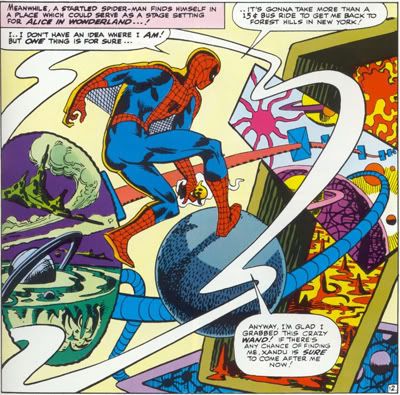
Art by Steve Ditko
This is Spider-Man during his first encounter with Doctor Strange, which is almost always a "Through the Looking Glass" experience of one kind or another. I love this panel, from 1965's 'The Amazing Spider-Man King Size Annual" #2. These kinds of things were bound to happen when hanging out with illuminated Greenwich Village occultists in the mid-sixties.
In 1970 Spider-Man even helped alter the Comics Code regulations regarding the depiction of drugs. The Nixon administration apparently requested Marvel feature an anti-drug storyline in one of their comic titles. Lee chose "Amazing Spider-Man" #s 96-98, May-July of 1971. In the story Peter's friend, the son of the Green Goblin, gets hooked on pills. The Comics Code refused to approve the storyline so Marvel ran the issues without the seal. The success and merit of the issues led to the Comics Code revising their regulations. Or so the story goes.
As said, casting Willem Defoe as the Green Goblin was perfect, but as others have noticed, the dumb-looking costume of the movie was as much a failure as Spidey's was a success.
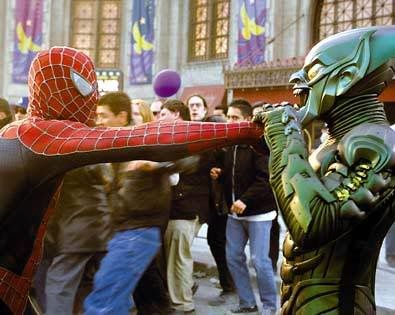
I suppose it is a bit Mugwumpy, which somehow makes sense in proximity to an actor who was both Jesus and Max Shreck, but Defoe's real face is far scarier then that helmet. This is a hell of a lot more scary.
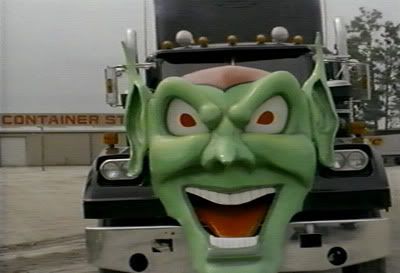
"Maximum Overdrive". I'm the only one who likes this movie.
Spider-Man also drugs his villains a lot. Many super heroes do it, some of them full time. They're a bit like fascists in that way. Because Spidey has chemistry skills and frequently fights creeps more powerful then him he has to do something to stop them or slow them down. Here he takes out the Templar emblemed, vengeance seeking Frank Castle, the Punisher, with a cocktail he whipped up.

Art by Frank Miller and Klaus Janson
And he works a Ceres reference in to boot. And of course as a super hero Spider-Man gets drugged, gassed, or otherwise whammied into a hallucinatory state like twice a month. Drugging Spider-Man is sole purpose of existence for my favorite Spider-Man villain, Mysterio.
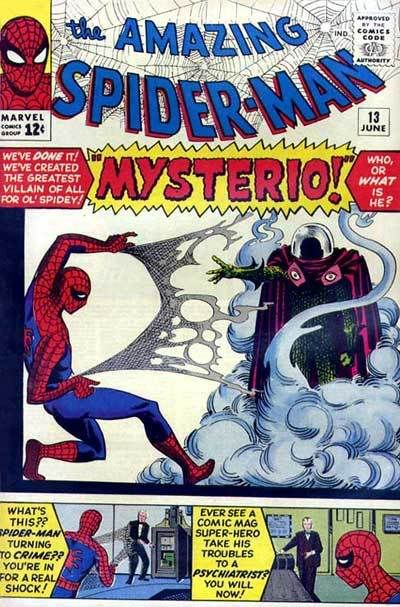
Art by Steve Ditko
Here we see the hallucinatory attack enacted by the Green Goblin from the spectacular "Spectacular Spider-Man" #2.
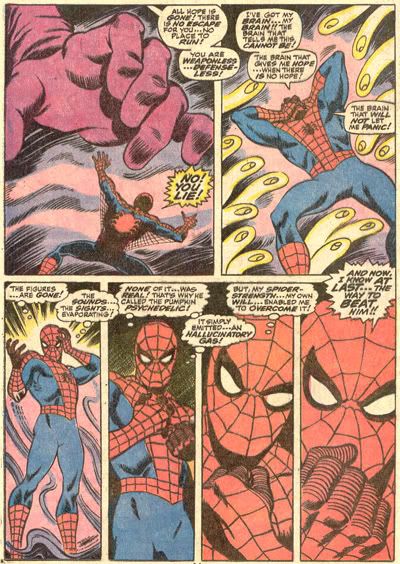
Art by John Romita
Note that it is Spider-Man's will, his great power, which is Intuition, which enables him to break the spell of the psychadelic pumpkin-bomb. I'm happy to note that Spider-Man ultimately defeats the Green Goblin in this storyline by exposing him to his own psychotropic agents. Like Batman and the Scarecrow in "Batman Begins".
Now to mythology. It is very interesting to note that Spider-Man is a goddess resonating figure and an interesting one at that. We should not at this point be at all alarmed to find the Goddess incarnate as a masculine character, especially given all of the alchemical nods in the Spider-Man story. Indeed a feminine spider super-ejaculator is a hermaphroditic metaphor of profundity. The Spider is almost always feminine in nature, from Shelob to Charlotte. And this is the case in Greek mythology as well in the form of Arachne. Arachne was a great weaver who boasted at being better at it then Athena. This led to a disguised Athena and Arachne entering a weaving contest. Arachne's work was flawless, but as it depicted transgressions of the gods, highly disrespectful. Arachne hung herself in shame. Athena took pity and turned the noose into the spider's web. With great power comes great responsibility. This of course connects the symbol of the feminine spider to the important Goddess metaphor of weaving Fate. Note the application of this legend to Kafka's "Metamorphosis" as well.
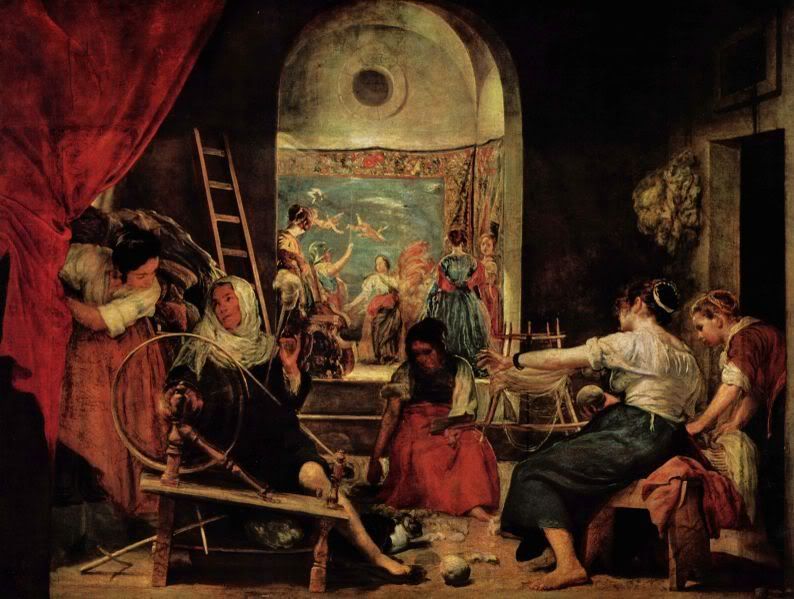
Diego Velázquez, "The Fable of Arachne", c. 1644-48
In "The Mystery of the Cathedrals" Fulcanelli wonderful illustrates the connection between Arachne and the important Mystery School initiatory figure of Ariadne via the spoken Cabala. Ariadne was a bride of Dionysus. When Dionysus descended to the Underworld he rescued Ariadne and his mother Semele and brought them to Olympus, a resurrection allegory of highest importance in Dionysian and Eleusian Rites. It was also the magic thread of Ariadne that enabled Theseus to navigate the Minotaur's labyrinth, a major initiation emblem and a symbol of the Great Work of Alchemy.
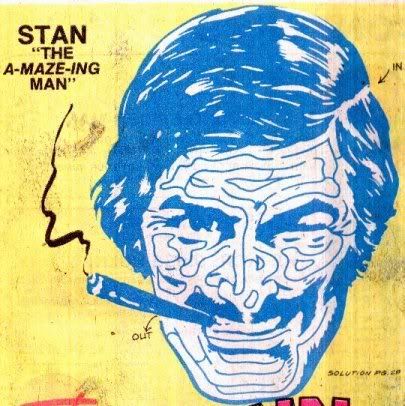
Artist unknown
I haven't read Spider-Man in years, not since the days when Todd MacFarlane started making Mary Jane's hair a third main cast member. But I heard recently that Marvel decided to undo a number of their fumbles with the franchise in a decidedly dark manner if you ask me. To do away with mistakes like the marriage to Mary Jane, the death of Aunt May and added spider-powers including organic webs like the movies, they wrote a story in which Peter and Mary Jane make a deal with Mephisto, who is the Devil, sacrificing the happiness of their marriage for the return of Aunt May to the living. Obvious occult symbolism at play, but, a deal with the devil as a retcon device? What level of initiation is this? Where is Peter's Intuition? It is not unlike shooting your wife in the head a second time playing William Tell in order to enter Annexia.
No comments:
Post a Comment